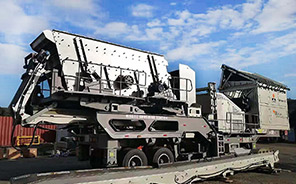A hammer mill is a versatile size-reduction machine that uses high-speed rotating hammers to pulverize materials through impact, shear, and attrition. Here are its key operational principles:
1. Feeding Mechanism
– Material enters the grinding chamber through a hopper (gravity-fed or forced via a feeder).
– The feed rate can be adjusted to control particle size and processing efficiency.
2. Grinding Chamber
– Contains a rotor assembly with multiple hammers (free-swinging or rigid) attached to a central shaft.
– The chamber may have liners to protect against wear and enhance grinding.
3. Hammer Action
– The rotor spins at high speed (typically 1,500–6,000 RPM), causing the hammers to strike incoming material.
– Impact forces shatter brittle materials, while shear forces cut fibrous or tough substances.
 4. Particle Size Reduction
4. Particle Size Reduction
– Particles are crushed between the hammers and the chamber’s interior surfaces.
– Repeated collisions further reduce particle size until they meet the desired fineness.
5. Screen Classification
– A perforated screen at the discharge end determines final particle size.
– Smaller holes = finer particles.
– Larger holes = coarser output.
– Particles exit once they are small enough to pass through the screen.
6. Discharge & Collection
– Reduced material exits via gravity or pneumatic suction.
– Collected in a bag, cyclone separator, or bin for further processing.
Key Variables Affecting Performance
| Factor | Effect |
|——–|——–|
| Rotor Speed | Higher speed = finer particles but more heat generation |
| Hammer Design | Shape (blunt vs. sharp), material (steel, stainless steel) affects grinding efficiency |
| Screen Size | Controls final particle size distribution |
| Feed Rate | Too fast = clogging; too slow = inefficiency |
| Material Properties | Moistu.jpg) hardness, and brittleness influence grinding effectiveness |
hardness, and brittleness influence grinding effectiveness |
Applications
– Agriculture (grain milling, feed production)
– Pharmaceuticals (powdering drugs)
– Recycling (shredding paper, e-waste)
– Food processing (spices, sugar)
– Industrial (coal, limestone crushing)
Advantages & Limitations
✔ Simple design & easy maintenance
✔ Handles a wide range of materials
✔ Adjustable particle size via screen changes
✖ Heat





Leave a Reply